How To Cook Fava Beans
How To Cook Fava Beans is a step-by-step tutorial on the process involved in cooking fava beans. They’re tender, creamy and one of spring’s finest offerings!
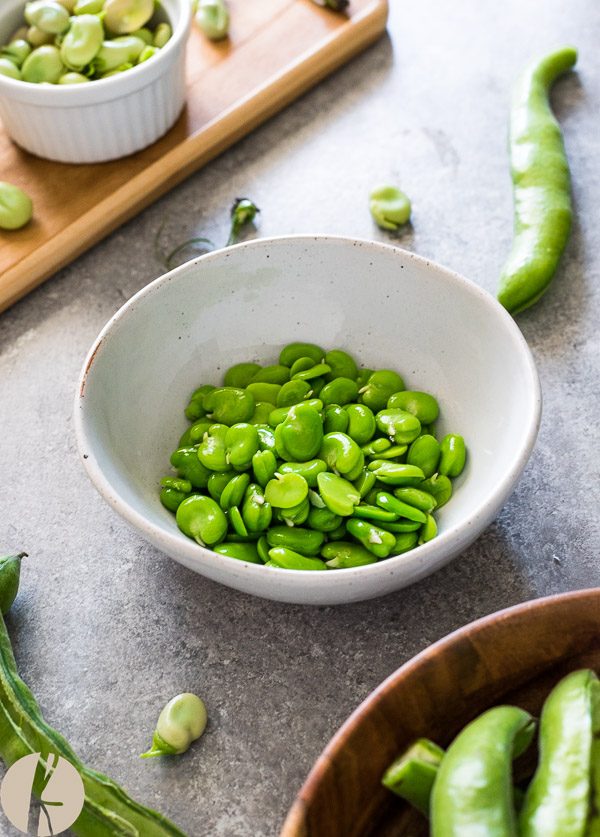
If you’re like me, you’ve blown past fava beans at the farmer’s market or supermarket because you either have no idea what to do with them or you have no idea what they are.
Fava beans basically look like rustic, gigantic pea pods. I never knew what they were for years and chose English peas over them at the market without knowing what I was missing.
Over the years I’ve scoured numerous fava bean recipes that I wanted to try, but I’d read that prepping them was labor intensive so I never got around to it until I encountered them in cooking school.
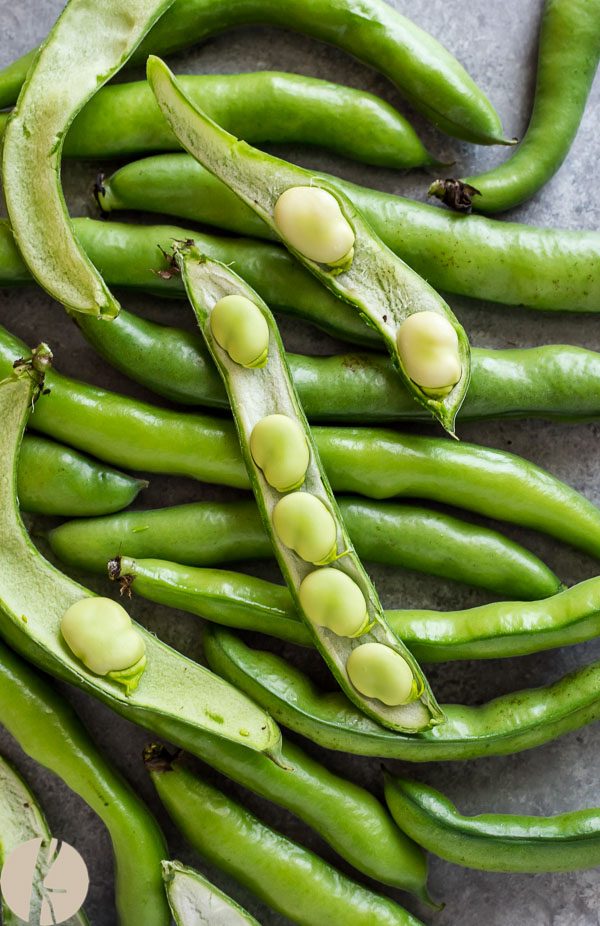
My first experience blew me way. If you’ve ever experienced freshly shelled English peas, you know what a treat they are. In my opinion, favas are about 10 times better.
They’re delicate and creamy, and they simply taste like spring.
My cooking instructor said that when she sees a fava bean dish on the menu at a restaurant, she always orders it because of the process involved. I hate to be a copycat, but I do that now too.
Needless to say, I seek them out at the farmer’s market now, and most years I plant them in my garden and freeze my bounty for use during the year.
See my post on Fava Beans to learn more about them and access some delicious recipes!
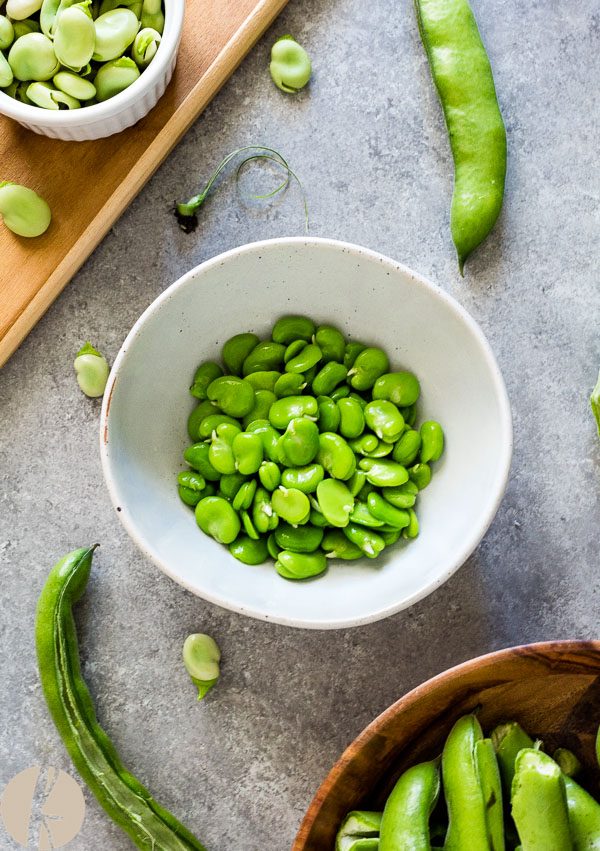
Cooking fava beans
There’s a two-part process involved in prepping and cooking fava beans — shelling them and removing the waxy outer skin.
The fava beans in the photo below have been shelled, but they still have the outer skin on them, which can be tough to eat. Some people don’t mind eating it, but the actual bean is so delicate and creamy, it seems like a sin to leave that on?
Try them and you’ll understand. 🙂
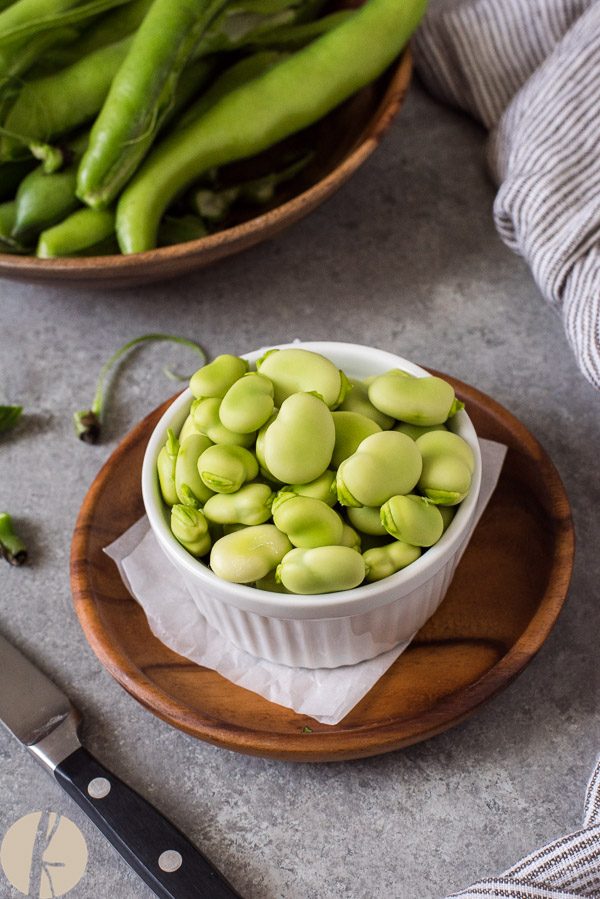
I’ve included a handy video to show you exactly how to prep and cook fava beans at the bottom of this post. Scroll down and check it out now or read on.
- To shell the fava beans, either pull back the top stem and “unzip” the pod, or use a paring knife very gently to get you started and open them up, as shown in the first photo. And one note — one pound generally equals only 1 cup of actual beans.
- Next, place the beans in boiling water and simmer for 1 minute, or if you’re making a puree, cook them a total of 3-4 minutes, depending on the size of the beans.
- Drain the beans and immediately place in a bowl of ice water to stop the cooking process. This process will keep your favas that beautiful, trademark green color. 🙂
- From there, gently squeeze the beans from the outer skin. They’re now ready for your recipes!
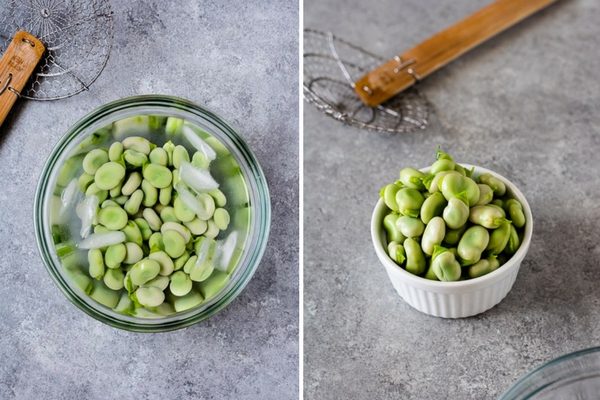
Fava beans are perfect anywhere you would use peas, such as pastas, risottos, soups, salads, and even hummus!
They’re a staple ingredient in Peruvian Solterito Salad, and they make a wonderful purée as well.
The green color of these beans are intoxicating, so they’re one of the most perfect ingredients to represent spring. They’re not around long, so get them while you can!
The beans freeze well too. I bought these and didn’t get around to using them until I got back from a trip, so I stuck them in the freezer, pod and all. They were just great, so keep that in mind!
Fava beans are completely worth the effort…the best things in life usually are. 🙂
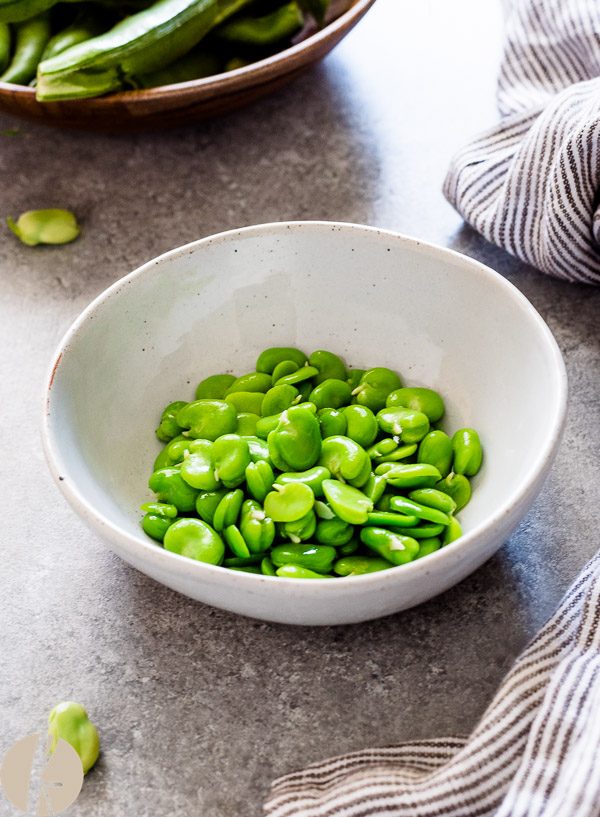
Fava bean recipes you’ll love:
Did you try this recipe? If so, be sure to leave a review below and tag me @flavorthemoments on Facebook and Instagram

How To Cook Fava Beans
Ingredients
- 1 pound fava beans in their pod
- pinch of salt
Instructions
- Pull back on the tip of the pod, and “unzip” it, opening the pod and removing the beans. Alternately, you can use the tip of a paring knife to gently open the pod along the seam, being careful not to cut the beans. You will have roughly one cup of fava beans after shelling.
- Fill a medium saucepan with water and bring to a boil, and fill a small bowl with ice water and set aside. Add about a teaspoon of salt to the water, and add the fava beans. Turn down the heat and simmer at a gentle boil for 1 minute. Drain immediately and pour the beans into the ice water to stop the cooking process.
- Drain the beans and gently squeeze from the waxy outer skin. The bean are now ready for your pastas, soups, salads, and purees!
Video
Notes
- 1 pound of fava beans yields 1 cup shelled.
- Shell fava beans and freeze uncooked in the protective skin for up to 6 months, thawed slightly and cooked as directed. The beans won’t be as green but they’re just as delicious.
- Once the skins are removed, beans may be kept in an airtight container for a few days until you’re ready to use them, or frozen.
- If making a puree, the fava beans may be boiled for a total of 3-4 minutes (depending on the size of the beans) before removing the skins for a creamier texture.
Nutrition
Nutrition is estimated using a food database and is only intended to be used as a guideline for informational purposes.
**A recipe video was added to this post and the photos were updated in April 2018.

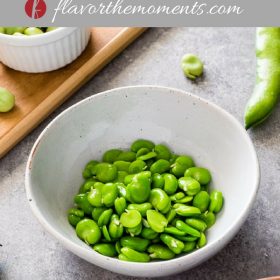

34 Comments on “How To Cook Fava Beans”
Hi Marcie! I just wanted to let you know I linked to this post from my Solterito salad just in case someone is able to find fresh fava beans. I have not seen fresh fava beans outside of Peru, but you never know… This is great information!
Thanks so much Tamara! We see them a lot here in CA in the spring but they sure can be hard to find!
convenient, quick, easy, print feature works perfectly, good blogging
Thank you for your feedback.
Grow your own. Easy to grow and fun to watch them in you own garden.Save some for seeds for next year.
They really are easy to grow, and they really help nourish the soil!
How to cook frozen fave so the skin doesnt get tough? Any hints
Hi Gina. I’ve shelled and frozen my beans, then boiled them for 1-2 minutes with no problems. The skin didn’t get tough, but honestly I remove the beans from the outer skin before I eat them most of the time because I find it bitter. I hope that helps!
Fresh fava beans are just soooo good. I didn’t find any good ones in my farmers market last week.
I love the spread Marcie. Will make that for sure.
Have a beautiful weekend lovely one. xx
I’m sorry you didn’t find any, Ash, and I hope you do soon! Mine has had some great ones so far, so I need to just keep buying more. . Hope you’re having a great holiday weekend!